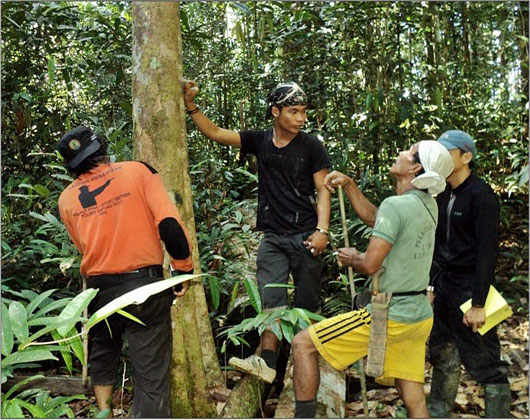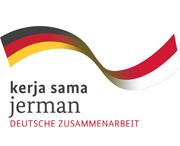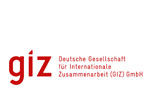FORCLIME
Forests and Climate Change ProgrammeTechnical Cooperation (TC Module)

Select your language

The implementation of the Ministry of Forestry’s forest management policy through the Forestry Minister regulation No. 49/2008 concerning village forest management is currently applied at district and community levels in Indonesia.
In particular, the community of Karangan Bunut hamlet in Manua Sadap village, Kapuas Hulu district, West Kalimantan province is actively participating in the implementation of this policy. Here, the people of Karangan Bunut have submitted a proposal to the Ministry of Forestry to manage their community forest of about 1,640 hectares under the Forest Village (Hutan Desa) scheme. The proposed location has already been verified by a team of the Ministry of Forestry in September 2012.
While waiting for the Village Forest permit to be issued by the Ministry of Forestry, the community has initiated a forest inventory, including Non-Timber Forest Products (NTFPs) potentials, in the proposed forest area.
FORCLIME in collaboration with the Tanjungpura University in Pontianak, West Kalimantan, has facilitated the forest inventory in Manua Sadap village. This activity was undertaken together with the community of Karangan Buntut.
Prior to data collection, which took place over a period of ten days, all parties involved in the inventory received a five-days training on how to conduct data collection in the field. The training also aimed at enabling the community to independently conduct forest inventories in the future.
The methodology for the forest inventory applies systematic sampling and square plots. Overall, 18 plots in a distance of 1,000 m have been installed. The distribution of plots was defined based on land cover classes, utilization principles by the community, and division of representation wide.
Data analysis regarding the economic potential of the Village Forest has shown that many commercial timber species can be found in the inventory plots, such as Tekam (Hopea sp) and Meranti (Shorea sp) or Kelansau (Dryobalanops sp). Six out of the established 18 plots can be classified with very good land cover classes where many trees with a diameter of more than 35 cm, including Tekam and Meranti, can be found. This is because these six plots are located upstream and therefore difficult to reach during the community’s daily activities.
Furthermore, there are five plots with moderate land cover, which contain only a low number of less commercial timber species, such as Kempas (Koompasia malaccensis), and thus also a low timber potential.
The remaining seven plots are forests with a low canopy closure, or former fields, which therefore only contain a low timber potential. These seven plots are located close to the community’s settlements, and are thus highly influenced by their daily economic activities.
High exploitation of NTFPs such as rattan, by the community of Karangan Bunut has already reduced the presence of rattan with ready-to-be-harvested size, which can therefore today be found in upstream forest areas only.
The non-forest land located downstream at seven inventory plots is used by local people for the collection of food, such as Gambir (Syzygium polyanthum) or Entaban (Poikilospermum suaveolens). Medicinal plants like Forest Betel (Piper sp) or Keminting (Melastoma affine) are still abundant in all plots.
The Dayak Iban community in Karangan Bunut has excellent local wisdom about the use of forests and their resources. For example, not all forest areas are converted for farming, and fields are cultivated periodically. The un-cultivated land is planted with rubber and fruit trees such as durian or tengkawang, and thus often called Tembawang forest. (Tengkawang is the local name for a fruit tree that belongs to the family of Dipterocarpaceae, and has fruits which produce high value oil).
Regarding wildlife conservation, Dayak Iban local wisdom does not allow them to hunt Orangutans (Pongo pygmaeus), as they believe that the Orangutan is an ancestor of the Dayak people.
The results from the inventory will be used as a baseline to develop a forest management plan of the Karangan Bunut forest based on the Village Forest scheme.
The forest inventory has shown that the forest resource potential in Karangan Buntut is still very high. Therefore, forest management based on the Village Forest scheme combined with local wisdom will be able to achieve the sustainable management of the existing forests while also contributing to the improvement of livelihoods of the people in Karangan Buntut community.
For further information, please contact:
Ali Mustofa, Thematic Leader for Community Empowerment
Tunggul Butarbutar, Strategic Area Manager for FMU Development


